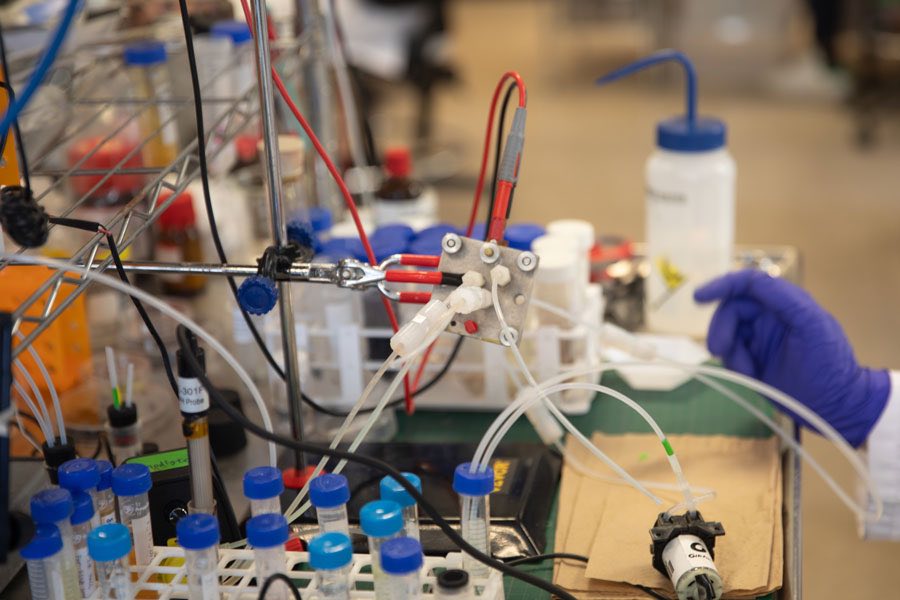
In an effort to meet the challenge of climate change, a team from the University of Toronto has found a more efficient way to capture carbon directly from the air.
A team from the College of Applied Science and Engineering designed a device that uses electrochemistry to enhance the direct absorption of carbon from the air. This innovative strategy can boost the mass adoption of this emerging technology. According to David Sinton, lead author of the study, scaling is currently difficult due to the high energy consumption and carbon footprint of existing methods. Your team’s goal is to deliver the most efficient solution.
Air to liquid: how does it work?
The specific method the team wants to improve is called the pH swing cycle. The process begins with air being pumped through a highly alkaline liquid solution, which captures carbon dioxide from the air in the form of carbonate. To reuse the capture fluids, chemicals are added to turn the carbonate into a solid salt that is heated in traditional methods using natural gas. This converts the carbonate back into carbon dioxide that can be stored or reused.
However, Yi (Sheldon) Xu, a member of the team, points out that this typical process generates between 300 and 500 kilograms of CO2 per ton of CO2 captured, which, while positive, is not quite as efficient.
Solution
The team’s proposed solution relies on electrochemistry. They invented a device that functions as a fuel cell and electrolysis at the same time. Essentially, this device quickly alternates between the two modes, allowing for the regeneration of alkaline solutions needed for carbon capture.
This process, in addition to eliminating the need for a heating step, uses electricity instead of natural gas, which reduces carbon emissions. This electricity can be obtained from clean sources, such as solar or wind power.
Promising results
The new process proposed by the team has enviable efficiency. It generates approximately 11 kg of carbon dioxide equivalent for every ton of carbon dioxide captured. This is 40 times less than the current thermal process. Thanks to their innovation, the team was ranked among the top 60 teams in the XPRIZE Carbon Removal Global Competition last year.
towards the future
Although this process is promising, the team is working to improve the pickup fluid and further reduce energy consumption. Likewise, they are looking for sustainable and economical solutions for implementation on an industrial scale. A hopeful Xu invites other researchers to join in the cause and explore areas, such as electrode design, for new innovations. The goal is to have carbon capture plants that are less energy-intensive and more effective in combating climate change.
more information: utoronto.ca

“Beeraholic. Friend of animals everywhere. Evil web scholar. Zombie maven.”

:quality(85)/cloudfront-us-east-1.images.arcpublishing.com/infobae/BEX3PV47I5HFPMBGDQHIOFV4QI.jpg)
:quality(85)/cloudfront-us-east-1.images.arcpublishing.com/infobae/YZCGWNKNTBDEBFDKGRSI6HVMBY.jpg)




More Stories
This will be your health plan to prevent heat hazards
Mysterious creatures are swimming off the coast of the United States due to climate change, so what are they?
There is a place where time seems to pass more slowly.